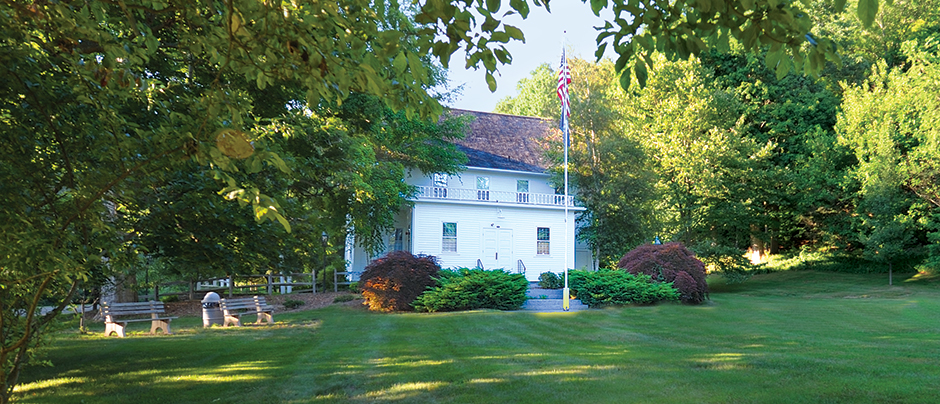The Chester Meeting House
In 1740 the people of Chester withdrew from the Second Ecclesiastical Society in Centerbrook and set up a simple first Meeting House, which served the community for 50 years. The site of the original building was at the foot of the hill, across from the old cemetery.
In 1793, according to early records, the community voted to erect a meeting house on the site the building occupies today. This second Meeting House, of the Fourth Ecclesiastical Society of Saybrook, served as a church until 1845 when the third Meeting House was built on the site adjacent to the present United Church. In 1847, the Town of Chester bought the second Meeting House building, complete with stoves and furniture, for $300. It was used for town meetings from that date until 1960 and was referred to as the Old Town Hall from then on. It is one of a very few buildings in New England that have been in continual use for 200 years.
Thanks to the generosity of two Chester residents, Merritt Brooks and Stephen Shortland, in the remodeling of 1876, the building was to enjoy its “heyday” as a theater and concert hall. A stage was added and the balcony extended to its present horseshoe shape. Panels from the earlier church were used in the ceiling and walls of the stage and at the top of the stairs to the balcony. The Old Town Hall soon became part of the “musical renaissance” of the Lower Connecticut Valley with Goodspeed Opera House, music schools and conservatories.
The Old Town Hall witnessed many events under its roof. P.T. Barnum’s midget star, Tom Thumb, appeared there as did barbershop quartets, local drama productions, recitals, pageants, high school proms and square dances, fairs and school graduations. However, the construction of the Chester Elementary School in 1960 marked the end of this era of activity. The building ceased to be used for town meetings and community affairs. It was subsequently used for occasional auctions and benefit programs until 1970, when the Chester Historical Society, who held their meetings in the building, became interested in its preservation.
The first major goal of the Historical Society was the restoration of the Old Town Hall (now called the Chester Meeting House), which had fallen upon bad days of disrepair and disuse. In March 1972, the Old Town Hall was listed on the National Register for Historic Sites. During the winter of 1972-73, the building was completely refurbished and renovated. On Memorial Day 1973, the restoration was completed and the Old Town Hall was reopened at a town-wide reception following the annual parade.
Since that time the Meeting House has been used extensively for town meetings and public hearings, the Historical Society-sponsored Robbie Collomore Music Series, theatrical performances of the Meeting House Players, and much more.
To better accommodate the increasing number of the concerts and plays, a second fund drive was launched to finance a subsequent addition, which was completed in the spring of 1985 and dedicated to the memory of Burton Cornwall, a Chester voice teacher, gifted performer, and a trustee and benefactor of the Historical Society. This addition increased the size of the stage and provided space for dressing rooms and storage. An archives room was also included on the lower level to house the Historical Society’s growing collection of town artifacts and memorabilia. In 1995 the balcony was carpeted and the remaining pew panels were installed to separate the rows of seating. A handicapped bathroom was added and the entire interior was painted. The ramp for the handicapped was relocated and extensive landscaping done.
The Meeting House is a cherished landmark building and all who enjoy using it are asked to treat it with care and respect.

